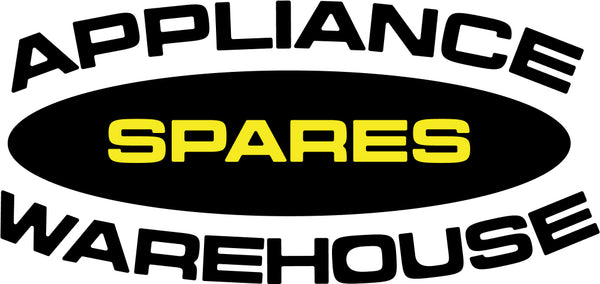5 Signs Your Appliance Needs a Spare Part Replacement (Before It Breaks Completely)
Share
Appliance Spares Warehouse - catching a problem early can save you time, money, and the hassle of a full appliance replacement. Here are five common warning signs that an appliance needs a spare part replaced, with examples and suggested parts to check for each case.
1. Unusual or New Noises

If your appliance starts making rattling, grinding, banging, or high-pitched whining sounds, something is wearing out.
- Washing machines: Grinding or thumping often points to worn bearings, a damaged drum spider, or a failing motor coupler.
- Dishwashers: Rattling can be a loose spray arm or a failing pump/motor.
- Fridges: Buzzing or clicking may be a faulty condenser fan or start relay.
Suggested parts to check: bearings, motor brushes, pump assemblies, fan motors.
2. Appliance Runs Longer Than Usual
When cycles take much longer than they used to, or an oven takes ages to reach temperature, components responsible for heating, timing, or sensing may be degrading.
- Washing machines: A slow or incomplete cycle can indicate a problematic timer, worn belts, or a failing heating element (for washer-dryers).
- Ovens: Longer heat-up times often mean the heating element or thermostat is faulty.
Suggested parts to check: heating elements, thermostats/thermistors, belts, timers, control boards.
3. Poor Performance or Inconsistent Results
If your appliance no longer cleans, cools, or cooks as well as before, replaceable parts might be the cause.
- Dishwashers: Dishes coming out still dirty could be blocked spray arms, a worn pump, or a failing inlet valve.
- Fridges/freezers: Inconsistent temperatures usually point to a faulty thermostat, evaporator fan, or defrost element.
- Washing machines: Clothes not draining or spinning properly often means a blocked pump, worn belt, or faulty drain valve.
Suggested parts to check: spray arms, inlet/drain valves, pumps, thermostats, defrost heaters.
4. Error Codes, Warning Lights, or Unresponsive Controls
Modern appliances commonly show error codes or lock up when a sensor or control fails. Don’t ignore these — the code often indicates a replaceable part.
- Look up the error code in your appliance manual or on the manufacturer’s website.
- Common culprits include temperature sensors, door switches, control boards, and pressure switches.
Suggested parts to check: control boards, sensors (NTC/thermistors), door interlocks, pressure switches.
5. Visible Wear, Cracks, or Leaks
Physical damage is the easiest to spot and usually cheap to fix if addressed early.
- Cracked door seals on fridges and ovens reduce efficiency — replace seals promptly.
- Worn hoses, clogged filters, or cracked tubs can lead to leaks — replace hoses and gaskets as soon as you notice damage.
- Broken knobs, handles, or shelves are simple fixes that restore safety and usability.
Suggested parts to check: door seals (gaskets), hoses, clamps, filters, glass shelves, knobs and handles.
Quick How-to: Confirming the Right Part
- Find your appliance’s full model number (usually on a sticker inside the door, on the back, or behind a kickplate).
- Search your model number on our site or use the part code if you already have it.
- If you see an error code, note it down and search for that code plus your model number.
- When in doubt, take a clear photo of the faulty area — our team can confirm the correct replacement.
Need help identifying the right part?
Use our search tool, upload a photo through our contact page, or call us for quick verification. Replacing small worn parts early can prevent costly repairs later.
Closing Notes & Safety Reminder
Always disconnect power and water supplies before attempting repairs. If you’re not comfortable working on an appliance, a qualified technician should perform the replacement. Genuine replacement parts ensure correct fit, safety, and long-term performance.
